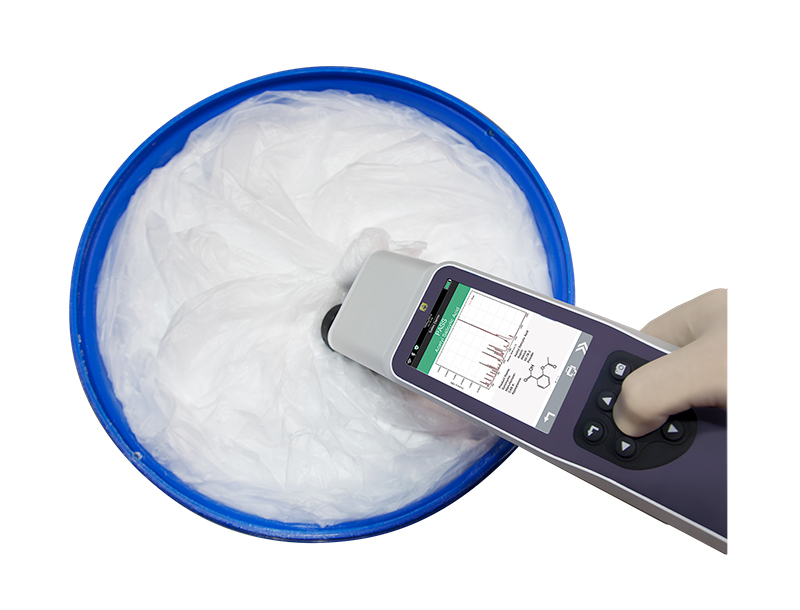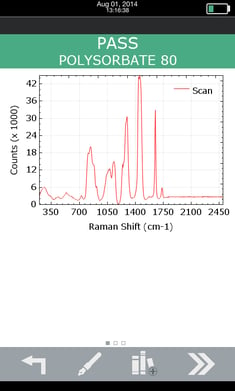ASEPTIC IDENTIFICATION OF POLYSORBATES USING HANDHELD RAMAN
Polysorbates are used in a variety of industries including food, cosmetics, pharmaceuticals and biopharmaceuticals – specifically in the manufacturing of parenteral medication and cell culture growth. Due to industry regulations and quality standards, it is considered good practice to identify incoming materials prior to manufacturing. Because polysorbates are reactive to light and air, packaging is usually in thick, dark, amber bottles. This makes the identification process more difficult, as opening the container to sample could compromise the sterility and quality of these materials. Handheld Raman is capable of identifying these materials without any sampling or preparation.
MINIMIZE SAMPLE INTERFERENCE WHILE MAXIMIZING EFFICIENCY
Raman analysis of materials through thick, colored packaging commonly presents fluorescence interference. A feasibility study was performed to determine if polysorbate 20 and polysorbate 80 from three different vendors could be identified and distinguished via analysis through their original, amber bottle packaging using a handheld 785 nm excitation analyzer and Progeny, which uses a 1064 nm excitation laser to reduce fluorescence interference. Figure 1 demonstrates fluorescence interference when performing analysis on one of the bottles with a 785 nm analyzer versus obtaining a high quality spectra with Progeny. Figure 2 displays the Progeny spectra measured from all three of the samples in the original amber bottles. Polysorbate 20 and polysorbate 80 display different Raman spectra, with the notable difference being an additional peak at 1650 cm-1 for polysorbate 80, which is indicative of the monooleate groups. In order to determine if Progeny could distinguish the materials, a correlation algorithm was used to compare subsequent measurements of the polysorbates to the spectra in the library. Figure 3 shows a selectivity matrix to display the hit quality index (HQI) for these measurements. This indicates that polysorbate 20 can be distinguished from polysorbate 80.
Raman spectra display highly specific peak locations, corresponding to the functional groups of each molecule.

CONCLUSION
The quality of analysis can depend significantly on the type of bottle in which the polysorbates are packaged. For the identification of many polysorbates in amber bottles, Progeny will provide quick verification results without risking quality and sterility of the material by opening the container.
RECOMMENDED PRODUCT
Progeny Handheld 1064 nm Raman


